The Echoes of Israeli Apartheid in Myanmar
The parallels in conditions imposed on Palestinians and Rohingya reveal how elements of Israel’s genocidal project appear to have been taken up by Myanmar.
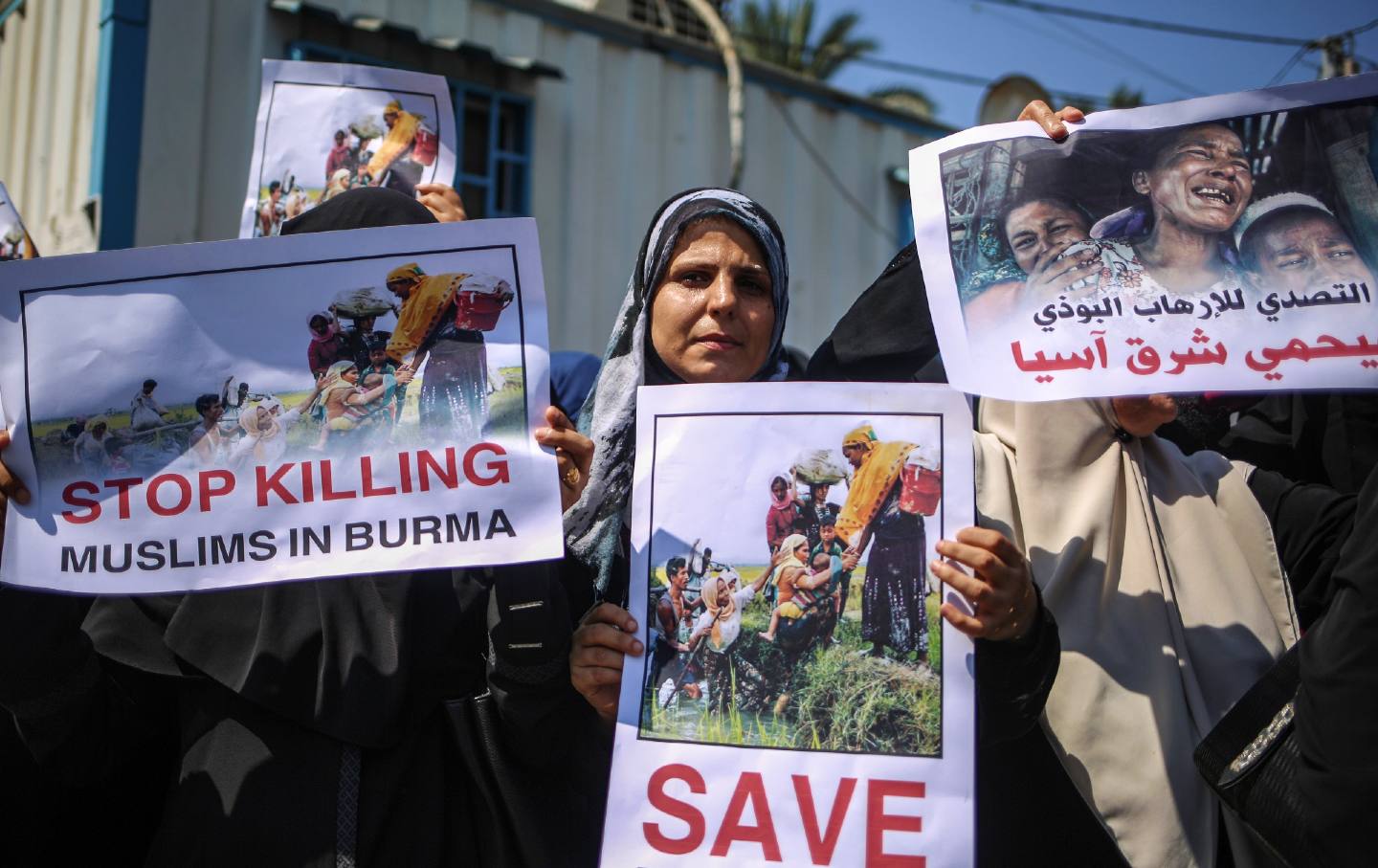
Demonstrators stage a rally to protest Myanmar’s oppression of Rohingya Muslims in Myanmars Rakhine state, in Gaza City on September 10, 2017.
(Ali Jadallah / Anadolu Agency / Getty Images)When reports began circulating of South Africa’s bid to bring Israel to the International Court of Justice, I thought back to a comment made by Israel’s ambassador to Myanmar four years earlier as senior political and military figures from Myanmar were making their way to The Hague. By that point, in late 2019, the human toll of the scorched-earth campaigns against the Rohingya in 2016 and 2017 was well-known: hundreds of villages turned to ash; three-quarters of a million Rohingya forced to flee the country, which at the time was the most concentrated outflow of refugees since Rwanda in 1994. UN investigators had already called the violence against Rohingya genocidal, so too did Gambia, which brought the case against Myanmar in 2019, setting the precedent that South Africa is now following with Israel. Above a news report detailing Aung San Suu Kyi’s decision to join Myanmar’s generals at the ICJ to contest Gambia’s charge, the Israeli ambassador, Ronen Gilor, tweeted his well-wishes: “Encouragement for a good decision and good luck!”
In 2019, the UN named Israel as one of several states that sent weapons to Myanmar during the genocide knowing that they “would be used in acts that violate international human rights law and international humanitarian law.” (Haaretz reported that sales continued even after the 2021 coup.) Israel, whose establishment in May 1948 came five months after Myanmar achieved independence, has long seen the Southeast Asian nation as a key ally: From the 1950s onward, Myanmar sent military personnel to Israel to “learn IDF methods,” as leaked diplomatic cables put it. Clear instances of atrocities committed by the Ne Win regime in Myanmar in the 1960s through to the 1980s did nothing to break Israel’s support: The same cables show that after Ne Win ordered a massacre of more than 100 students in Rangoon in July 1962, Israel’s ambassador reported that relations were “no less positive and friendly”; several years after Myanmar’s first pogrom of Rohingya in 1978, amid Ne Win’s warnings of a supposed “Muslim threat” in Myanmar, Mossad prepared an intelligence document for regime officials on the “Muslim underground in Southeast Asia [which operates under the] inspiration of Iran and Libya.”
The alliance should not be surprising: Both regimes have pursued, almost obsessively, the creation of an ethno-state, and both see extreme violence as a legitimate tool to advance this effort. But since the IDF began its bombardment of Gaza in October, I’ve thought about the ways in which Israel’s experiments in social engineering, colonization, and the systematic weakening of Palestinians appear to have diffused eastward. The parallels in the conditions imposed on Rohingya and Palestinians in the decades prior to the moment of violence that brought each to The Hague are striking, right down to the development of settler villages on confiscated land and the specifics of their apartheid systems of control. These measures were vital not only to enabling the genocidal violence underway in Gaza rnow and in Rakhine State in 2016 and ’17, but also in rallying the public to see those communities as necessary targets of mass killing.
In late September 2017, Myanmar’s ambassador to Israel attended a ceremony in the Gush Etzion settlement in the West Bank to mark the 50th anniversary of Israel’s settlement building project. He was among only a handful of foreign diplomats there. The same week, so-called “clearance operations” against Rohingya in the ambassador’s home country, launched in response to an attack by the Arakan Rohingya Salvation Army, were forcing upwards of 15,000 refugees into Bangladesh each day. They fled from a region of Rakhine State where, decades earlier, the Myanmar regime had begun constructing a network of model villages whose goal of colonizing the Rohingya and altering the demographic makeup of the region bore close resemblance to Israel’s project in the West Bank after 1967—the same project the ambassador was in Gush Etzion celebrating.
The Myanmar military often built these villages using Rohingya forced labor on land confiscated from Rohingya, and it incentivized Buddhists to move there with offers of a monthly stipend, food rations, and more. Settlers included not only ethnic Rakhine from elsewhere in the state but also homeless or destitute people from Yangon and Mandalay, and criminals given early release from prisons hundreds of miles away on the condition that they relocated to the villages and stayed put for three years. The only requirement was that they were Buddhist. Just like Israel, the regime in Myanmar sought to establish “facts on the ground” in a region whose demographic composition challenged its drive for ethno-national purity.
A decade ago, I visited several of these villages, as they came to be known. (“Natala” is a local acronym of the then–Ministry for the Progress of Border Areas and National Races, the body that spearheaded the settlement project; Rohingya are not considered one of Myanmar’s “national races.”) They had little of the sophistication of the West Bank settler project, but they showed a similarly cynical approach to state-making. Many villages remained decrepit over the decades: clusters of listing bamboo and timber houses that had been patched and repatched. One village, built in the mid-2000s, was made up solely of former prisoners, some of whom had still had years left on their sentences when the resettlement offer came their way. One man, who moved up from a jail in central Rakhine State two years earlier, recalled his conversation with prison officials: “I was told that in Rakhine [State] there are so many Muslims so we want to balance that out by sending Buddhists here.”
It wasn’t the first such settlement project undertaken in Myanmar—and it wasn’t the first time Myanmar had seemingly learned from Israel. In the mid-1950s, a group of planning experts from the Land Settlement Department of the Jewish Agency for Israel were brought to the town of Namsang, in eastern Myanmar’s Shan State, to mark ground for a settlement project. Prime Minister U Nu had visited Israel and was enchanted by the moshavim and kibbutzim he toured, and the socialist ethic of collectivism they symbolized. The Namsang settlement would be based loosely on moshavim rules (collective living, the sharing of profits and food), but the project had a local twist: Myanmar army veterans who had fought in the anticolonial struggles of the 1940s would be sent to live there.
Shan State was being wracked by local insurgencies and the activities of remnant Chinese nationalist Kuomintang forces, who had fled there in the early 1950s. The development of communities of replanted soldiers who had spent their adult lives in the service of the state would, the government hoped, give the military de facto reserve units in the restive borderlands. Even in peacetime, with the ethnic Bamar-dominated national leadership eyeing deeper penetration and colonization of minority regions in the periphery, these retired fighters might well do the government’s bidding.
The Land Settlement Department’s hands-on support for the Namsang Project was one feature of a budding post-independence relationship of exchange between Israel and Myanmar. Through the 1950s and into the ’60s, hundreds of Myanmar students, as well as military and public officials, were sent to Israel for training. As Magdalena Kozłowska and Michał Lubina have written, the Non-Aligned Movement saw nations newly freed from colonial rule develop south-south knowledge transfer lines, along which novel state-planning practices were transmitted. Although Israel wasn’t an NAM member, Myanmar had looked to its settlement project as an example of a new approach to state-making and saw its no-strings support for Myanmar’s development as an alternative to a relationship of dependency on the United States or the Soviet Union. In turn, Israel sent goods, expertise, and military equipment to Myanmar.
Ne Win’s coup in 1962 didn’t damage that relationship, and as the leaked cables attest, nor did the waves of state violence in the decades that followed, up to and including the 2017 campaign against the Rohingya. Eitay Mack, an Israeli lawyer who led the push for Israel to disclose its weapons’ sales to Myanmar, has noted that Israel provided military support to Rwanda during its 1994 genocide and Serbia in the mid-1990s (as well as the apartheid regime in South Africa), and likely saw the junta in Myanmar as yet another “business opportunity.” Indeed, Israeli weapons may have held particular appeal for regimes undertaking mass killing. As Antony Loewenstein writes in The Palestine Laboratory, “Both the Israeli government and private [weapons] companies promoted their products as effectively battle-tested on Palestinians.” Elbit Systems, a major Israeli defense contractor, frequently lauds its “field-proven” military technologies.
The settler project in Rakhine State in the early 1990s was accompanied by the imposition of apartheid measures. Rohingya had to obtain permission from authorities to marry or cross township lines, and in some cases, they needed travel permits just to visit a neighboring village. If a person failed to return home by the date stated on their permit, they could be struck from the household list—often their only proof of residence in Myanmar. (After 1982, the government refused to renew Rohingyas’ citizenship cards, setting the stage for their ultimate statelessness; in 2014, it excluded them from its nationwide census.) This kind of administrative erasure came in other forms, including a refusal by some authorities to issue birth certificates to Rohingya, which is required when applying for citizenship. Public records referred to them as Bengali. Arbitrary arrests were routine.
Popular
“swipe left below to view more authors”Swipe →After two waves of violence between Rohingya and ethnic Rakhine in 2012, some 140,000 Rohingya were confined to camps, yet those who remained in their villages faced even tighter restrictions on movement and access to healthcare. Nearby towns were suddenly off-limits: A Rohingya living five minutes from a town in central-north Rakhine State would not be allowed to visit the hospital there, even in urgent cases. They would instead travel under police escort to a hospital in Sittwe, the state capital—a journey that could take several hours. If admitted, they would receive treatment on wards segregated from Rakhine.
Years ago, I reported on one such case, in which a young Rohingya woman in the late stages of pregnancy had begun to experience severe pains. She alerted village authorities, who then called for an ambulance. The woman and her husband had needed to wait a day and a half for the ambulance to arrive, only to then be driven four hours to Sittwe for emergency treatment, despite there being a hospital minutes from her village. She died and so did the baby. Her husband was ordered back to their village. Both his wife and child were buried in Sittwe. On the day of the funeral, he was refused permission to travel there.
The parallels with the conditions imposed on Palestinians were marked even then. I thought of stories of Palestinians subjected to a racialized architecture of control, which denied them critical medical treatment; the inordinate waits at checkpoints to access hospital care or to visit dying relatives; and the ways in which this cast them as not only undeserving of basic care but as threats. Both Israel and Myanmar created highly visible security infrastructure, whether looming walls or internment camps, checkpoints or a heavy military presence. Each observed instance of contact that a Palestinian or Rohingya had with this infrastructure reinforced a view among antagonistic onlookers that these people—and not just the armed actors among them—required containment, if not worse. (“It is an entire nation out there that is responsible,” Israel’s President Isaac Herzog said five days after the Hamas attack.) Both regimes laced the public sphere with warnings of their innate violence; both sought ways to fragment the communities, spatially and administratively. All the while, international bodies continued to engage with them. US and European governments and businesses helped bankroll the expansion of Israel’s apartheid system, while the UN in Myanmar “deliberately de-dramatized” the gravity of the crisis in Rakhine State, and shut down efforts by staff to publicly warn of an impending catastrophe.
At the forefront of both South Africa and Gambia’s arguments for genocide is the extreme violence directed at the target communities by each state, as well as the rhetoric from public officials that accompanied it. But to focus on the nature of military operations and the overt calls for annihilation misses the fact that genocides begin long before, in administrative procedures and in the shades of meaning within public discourse that quietly shape prejudicial ideologies.
In the Argentinian sociologist Daniel Feierstein’s conceptualization of genocide as a “social practice,” the physical violence that often announces a state’s campaign of eradication is only one feature of a much longer process, often decades in the making, involving interlinked phases: “stigmatization,” “isolation and segregation,” “policies of systematic weakening” (overcrowding, malnutrition, sporadic killing, humiliation, abuse, collective punishment), and more. These render a group more easily killable—not only by its enervated collective physical state but also because, via dehumanization, segregation, and other measures, it is no longer perceived as part of, or important to, the national community.
The parallels between Israel and Myanmar, Palestinians and Rohingya, of course, only go so far. Mass dispossession of Palestinians occurred right at the founding of Israel, while the path to Rohingya statelessness and extreme violence unfolded over time. Hamas has provided a far more sustained and deadly opposition to the Israeli state than the Arakan Rohingya Salvation Army has to Myanmar. The nature and capabilities of the two militaries are also incomparable. Israel’s close alliances with Western governments and corporations have afforded it far greater capacity to destroy a population, just as they afforded it the means to create a vastly more sophisticated system of control and confinement than Myanmar could.
Yet the echoes of the Israeli project in Rakhine State indicate not only how like-minded regimes can learn from one another but also that the structural processes facilitating a population’s destruction so often go unrecognized for what they are—or could be. The conditions imposed for decades on Palestinians and Rohingya were either not seen as possible preparatory measures for genocide, or they were and were tolerated. Either way, the result is always the same: The world waits until the explosion of violence before taking some form of action, by which time the annihilatory project has entered its final stage.
Disobey authoritarians, support The Nation
Over the past year you’ve read Nation writers like Elie Mystal, Kaveh Akbar, John Nichols, Joan Walsh, Bryce Covert, Dave Zirin, Jeet Heer, Michael T. Klare, Katha Pollitt, Amy Littlefield, Gregg Gonsalves, and Sasha Abramsky take on the Trump family’s corruption, set the record straight about Robert F. Kennedy Jr.’s catastrophic Make America Healthy Again movement, survey the fallout and human cost of the DOGE wrecking ball, anticipate the Supreme Court’s dangerous antidemocratic rulings, and amplify successful tactics of resistance on the streets and in Congress.
We publish these stories because when members of our communities are being abducted, household debt is climbing, and AI data centers are causing water and electricity shortages, we have a duty as journalists to do all we can to inform the public.
In 2026, our aim is to do more than ever before—but we need your support to make that happen.
Through December 31, a generous donor will match all donations up to $75,000. That means that your contribution will be doubled, dollar for dollar. If we hit the full match, we’ll be starting 2026 with $150,000 to invest in the stories that impact real people’s lives—the kinds of stories that billionaire-owned, corporate-backed outlets aren’t covering.
With your support, our team will publish major stories that the president and his allies won’t want you to read. We’ll cover the emerging military-tech industrial complex and matters of war, peace, and surveillance, as well as the affordability crisis, hunger, housing, healthcare, the environment, attacks on reproductive rights, and much more. At the same time, we’ll imagine alternatives to Trumpian rule and uplift efforts to create a better world, here and now.
While your gift has twice the impact, I’m asking you to support The Nation with a donation today. You’ll empower the journalists, editors, and fact-checkers best equipped to hold this authoritarian administration to account.
I hope you won’t miss this moment—donate to The Nation today.
Onward,
Katrina vanden Heuvel
Editor and publisher, The Nation
More from The Nation
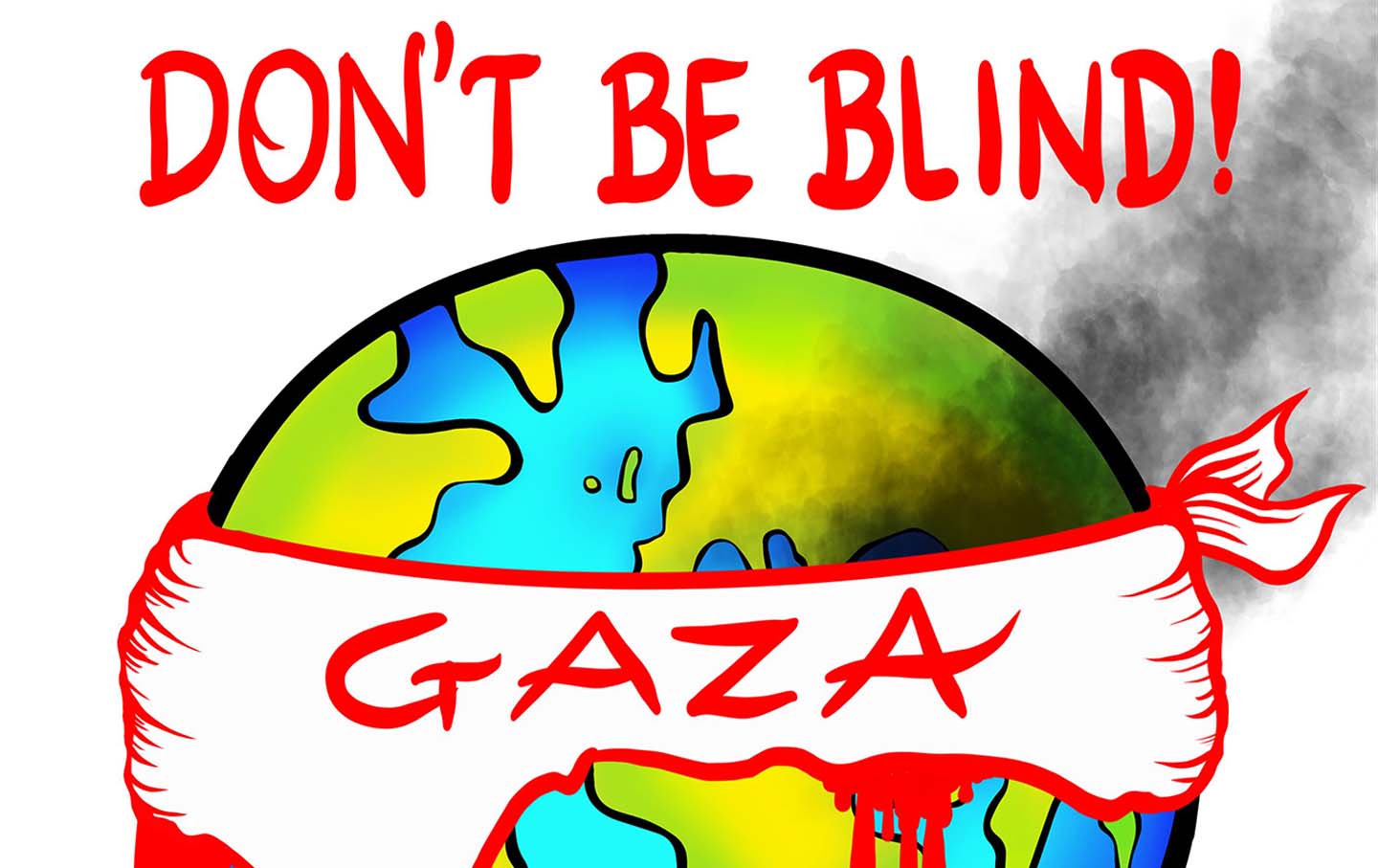
Blind to Brutality: The Palestinian Death Toll Surpasses 70,000 Blind to Brutality: The Palestinian Death Toll Surpasses 70,000
Over 70,525 Palestinians have been killed in Gaza; scholars estimate that 80 percent were civilians, largely women and children.
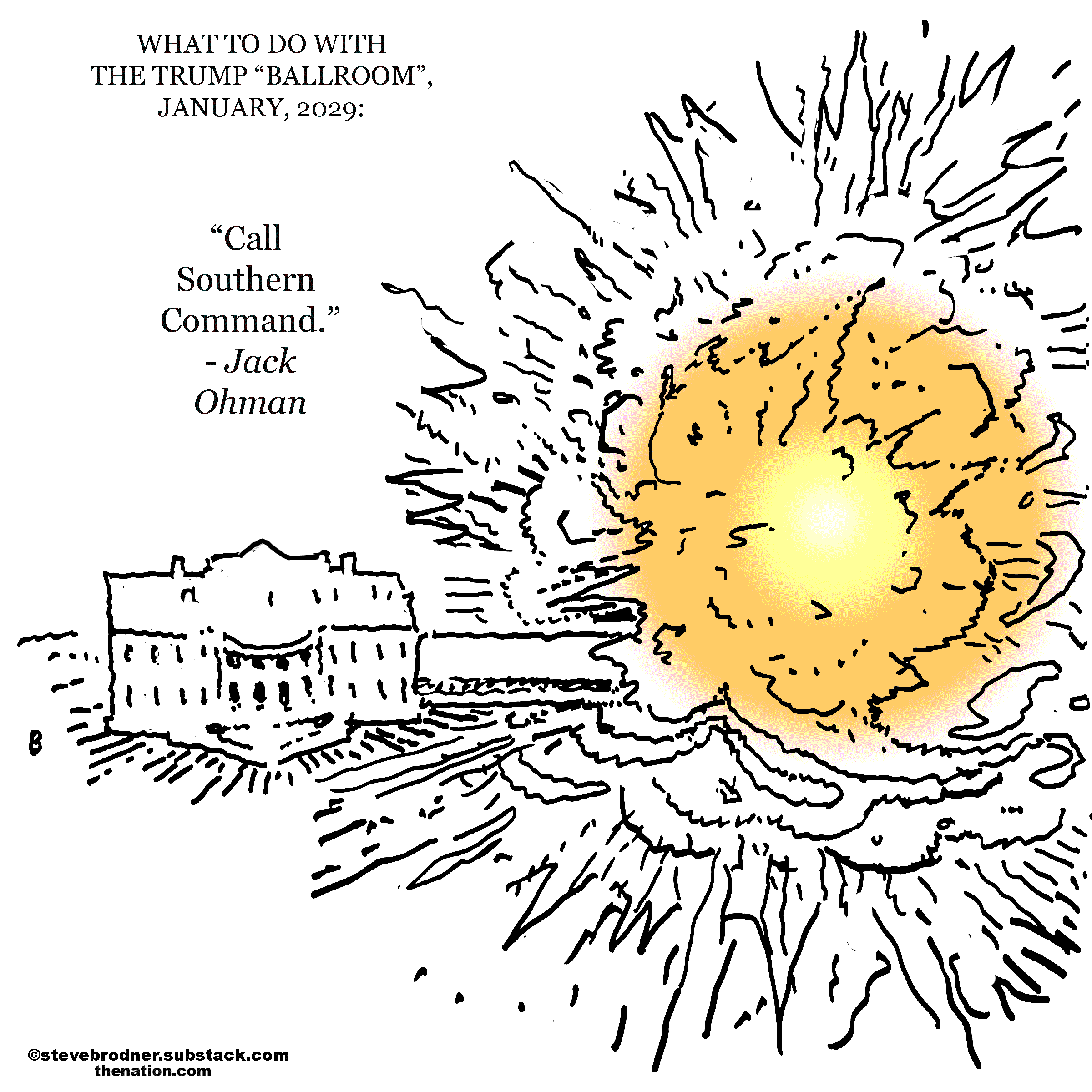
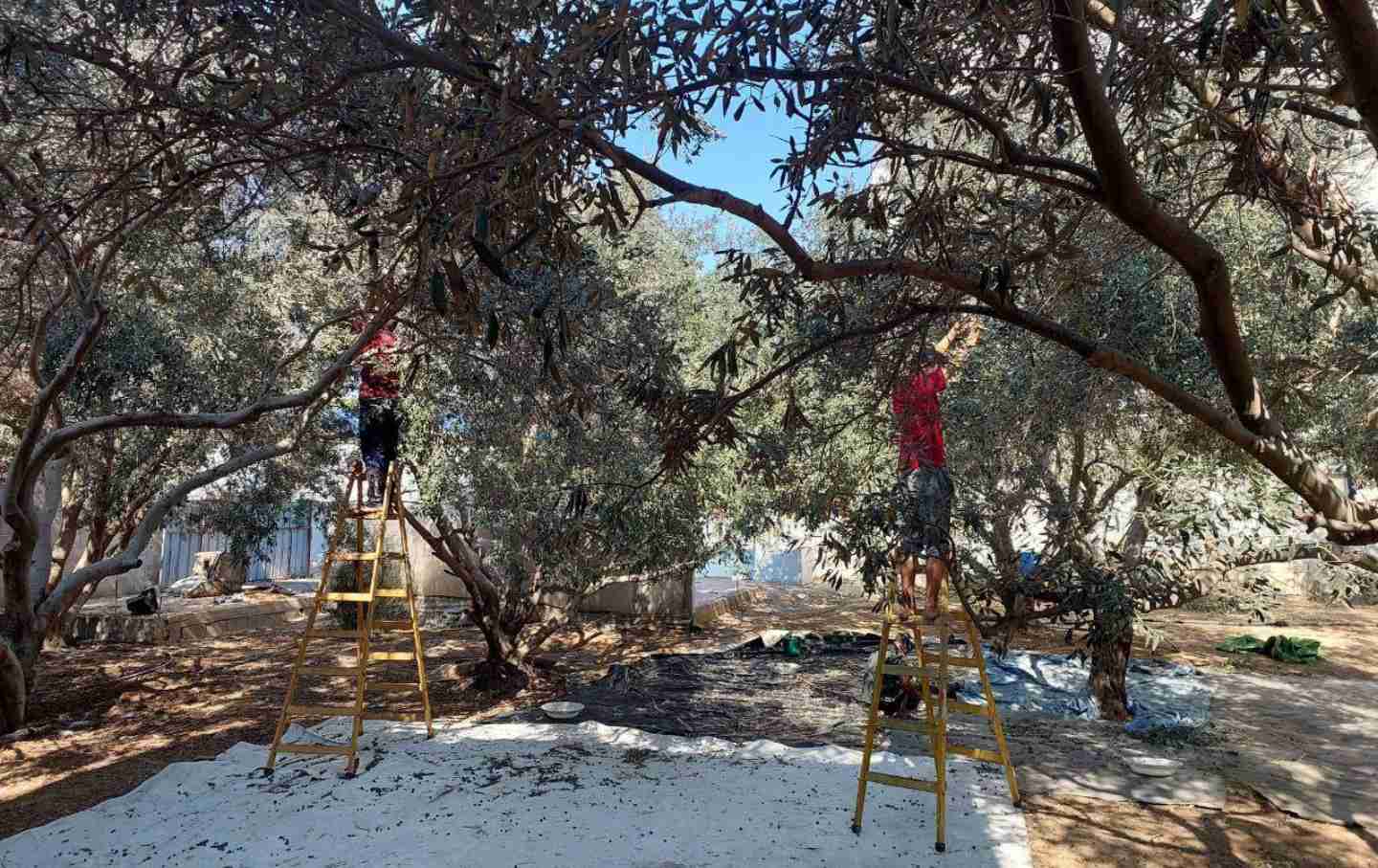
Israel Wants to Destroy My Family's Way of Life. We'll Never Give In. Israel Wants to Destroy My Family's Way of Life. We'll Never Give In.
My family's olive trees have stood in Gaza for decades. Despite genocide, drought, pollution, toxic mines, uprooting, bulldozing, and burning, they're still here—and so are we.
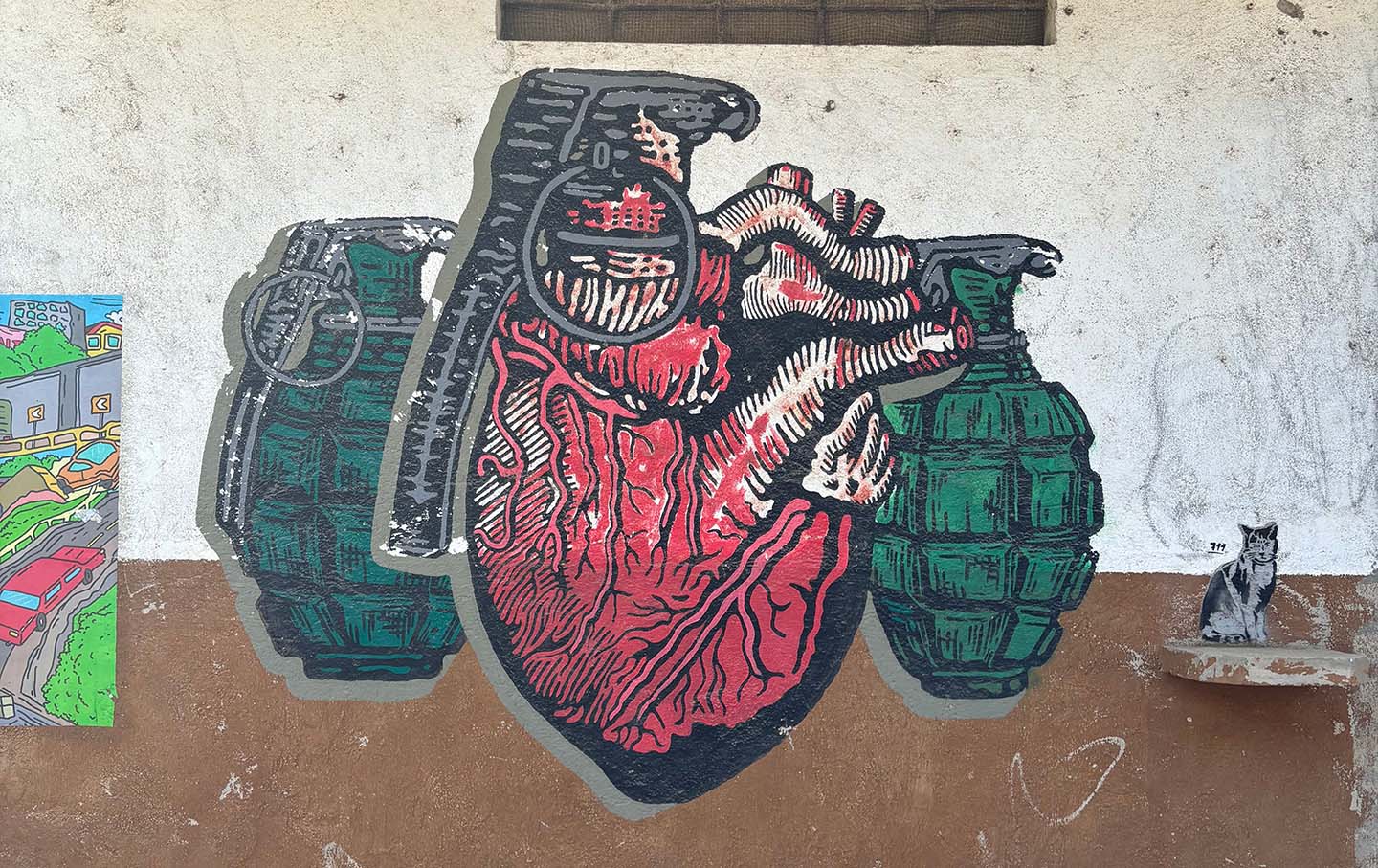
Destruction of Our Heart Destruction of Our Heart
From Gaza to Somalia, around the world people are struggling to survive.
OppArt / Anonymous and Peter Kuper
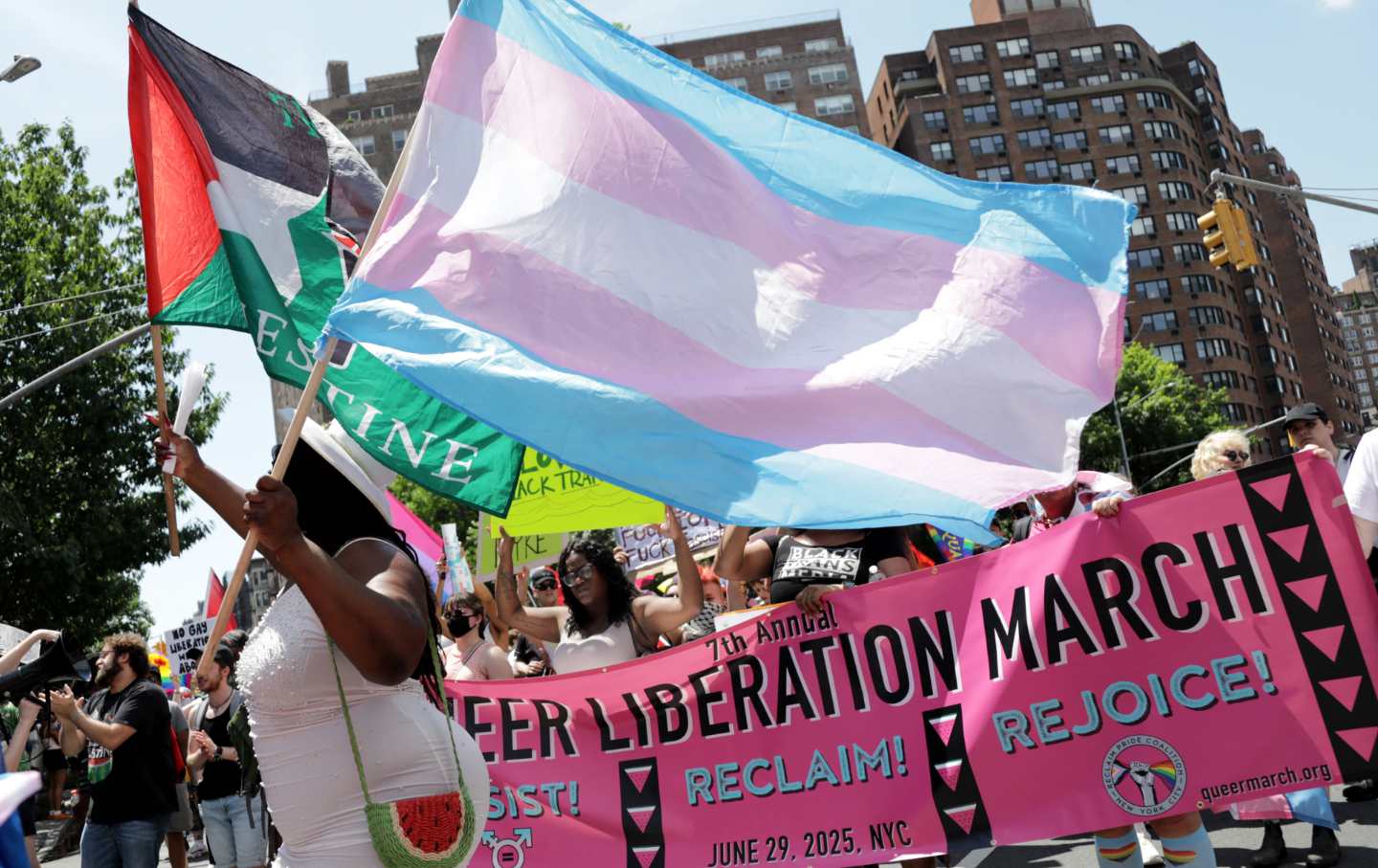
Why Palestine Matters So Much to Queer People Why Palestine Matters So Much to Queer People
Palestinian identity can “upend the whole world order, if done right, if spun right, if we activate it enough. And I think queerness is a very similar kind of identity.”

I’m a Teacher in Gaza. My Students Are Barely Hanging On. I’m a Teacher in Gaza. My Students Are Barely Hanging On.
Between grief, trauma, and years spent away from school, the children I teach are facing enormous challenges.


